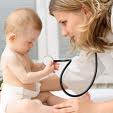الجوهرة المصونة
*****




المشاركات : 17164
العمـر : 36
تعاليق : مشرفة الطب والصحة
المزاج : 
الدولة : 
المهنة : 
الهواية : 
التسجيل : 10/10/2008
النقاط : 18248
التقييم : 501

 
توفيقك يارب

 |  موضوع: الاسبيرينAspirin موضوع: الاسبيرينAspirin  الإثنين نوفمبر 16, 2009 8:32 pm الإثنين نوفمبر 16, 2009 8:32 pm | |
| Aspirin (USAN), also known as acetylsalicylic acid (pronounced )abbreviated ASA), is a salicylate drug, often used as an analgesic to relieve minor aches and pains, as an antipyretic to reduce fever, and as an anti-inflammatory medication.
Aspirin also has an antiplatelet effect by inhibiting the production of thromboxane, which under normal circumstances binds platelet molecules together to create a patch over damage of the walls within blood vessels. Because the platelet patch can become too large and also block blood flow, locally and downstream, aspirin is also used long-term, at low doses, to help prevent heart attacks, strokes, and blood clot formation in people at high risk for developing blood clots.[1] It has also been established that low doses of aspirin may be given immediately after a heart attack to reduce the risk of another heart attack or of the death of cardiac tissue.[2][3]
The main undesirable side effects of aspirin are gastrointestinal ulcers, stomach bleeding, and tinnitus, especially in higher doses. In children and adolescents, aspirin is no longer used to control flu-like symptoms or the symptoms of chickenpox or other viral illnesses, because of the risk of Reye's syndrome.[4]
Aspirin was the first discovered member of the class of drugs known as non-steroidal anti-inflammatory drugs (NSAIDs), not all of which are salicylates, although they all have similar effects and most have inhibition of the enzyme cyclooxygenase as their mechanism of action. Today, aspirin is one of the most widely used medications in the world, with an estimated 40,000 tonnes of it being consumed each year.[5] In countries where Aspirin is a registered trademark owned by Bayer, the generic term is acetylsalicylic acid (ASA)
Therapeutic uses
Headache
Aspirin is one of the first-line drugs used in the treatment of migraine, bringing relief in 50–60% of the cases.[26] It is as effective as a newer triptan medication sumatriptan (Imitrex)[27] and other painkillers such as paracetamol (acetaminophen)[28] or ibuprofen.[29] The combination of aspirin, paracetamol (acetaminophen) and caffeine (Excedrin) is even more potent. For the treatment of migraine headache, this formulation works better than any of its three components taken separately,[28] better than ibuprofen[30] and better than sumatriptan. Similarly to all other medications for migraine, it is recommended to take aspirin at the first signs of the headache, and it is the way these medications were used in the comparative clinical trials.[31]
Aspirin alleviates pain in 60-75% patients with episodic tension headache.[32][33] It is equivalent to paracetamol (acetaminophen) in that respect, except for the higher frequency of gastrointestinal side effects.[33] Comparative clinical trials indicated that metamizole and ibuprofen may relieve pain faster than aspirin, although the difference becomes insignificant after about 2 hours.[32][34] The combination of aspirin, paracetamol (acetaminophen) and caffeine (Excedrin) is still more effective, but at the cost of more stomach discomfort, nervousness and dizziness
Pain
In general, aspirin works well for dull, throbbing pain; it is ineffective for pain caused by most muscle cramps, bloating, gastric distension and acute skin irritation.[36] The most studied example is pain after surgery such as tooth extraction, for which the highest allowed dose of aspirin (1 g) is equivalent to 1 g of paracetamol (acetaminophen), 60 mg of codeine and 5 mg of oxycodone. Combination of aspirin and caffeine, generally, affords greater pain relief than aspirin alone. Effervescent aspirin alleviates pain much faster than aspirin in tablets (15-30 min vs. 45-60 min).[37]
Nevertheless, as a post-surgery painkiller, aspirin is inferior to ibuprofen. Aspirin has higher gastrointestinal toxicity than ibuprofen. The maximum dose of aspirin (1 g) provides weaker pain relief than an intermediate dose of ibuprofen (400 mg), and this relief does not last as long.[37] A combination of aspirin and codeine may have a slightly higher analgesic effect than aspirin alone; however, this difference is not clinically meaningful.[38] It appears that ibuprofen is at least equally, and possibly more, effective than this combination.[39]
According to a meta-analysis of clinical trials for menstrual pain, aspirin demonstrated higher efficacy than placebo but lower one than ibuprofen or naproxen, although maximum doses of aspirin were never used in these trials. The authors concluded that ibuprofen has the best risk-benefit ratio.[40]
Aspirin did not ease pain during cycling exercise,[41] while caffeine, surprisingly, was very effective.[42][43] Similarly, aspirin, codeine or paracetamol (acetaminophen) were not better than placebo for muscle soreness after exercise.[
Discovering the mechanism
In 1971, British pharmacologist John Robert Vane, then employed by the Royal College of Surgeons in London, showed that aspirin suppressed the production of prostaglandins and thromboxanes.[75][76] For this discovery, he was awarded both a Nobel Prize in Physiology or Medicine in 1982 and a knighthood.
Suppression of prostaglandins and thromboxanes
Aspirin's ability to suppress the production of prostaglandins and thromboxanes is due to its irreversible inactivation of the cyclooxygenase (COX) enzyme. Cyclooxygenase is required for prostaglandin and thromboxane synthesis. Aspirin acts as an acetylating agent where an acetyl group is covalently attached to a serine residue in the active site of the COX enzyme. This makes aspirin different from other NSAIDs (such as diclofenac and ibuprofen), which are reversible inhibitors.
Low-dose, long-term aspirin use irreversibly blocks the formation of thromboxane A2 in platelets, producing an inhibitory effect on platelet aggregation. This anticoagulant property makes aspirin useful for reducing the incidence of heart attacks.[77] 40 mg of aspirin a day is able to inhibit a large proportion of maximum thromboxane A2 release provoked acutely, with the prostaglandin I2 synthesis being little affected; however, higher doses of aspirin are required to attain further inhibition.[78]
Prostaglandins are local hormones produced in the body and have diverse effects in the body, including the transmission of pain information to the brain, modulation of the hypothalamic thermostat, and inflammation. Thromboxanes are responsible for the aggregation of platelets that form blood clots. Heart attacks are primarily caused by blood clots, and low doses of aspirin are seen as an effective medical intervention for acute myocardial infarction. The major side-effect of this is that because the ability of blood to clot is reduced, excessive bleeding may result from the use of aspirin.
Pharmacokinetics
Salicylic acid is a weak acid, and very little of it is ionized in the stomach after oral administration. Acetylsalicylic acid is poorly soluble in the acidic conditions of the stomach, which can delay absorption of high doses for 8 to 24 hours. In addition to the increased pH of the small intestine, aspirin is rapidly absorbed there owing to the increased surface area, which in turn allows more of the salicylate to dissolve. Owing to the issue of solubility, however, aspirin is absorbed much more slowly during overdose, and plasma concentrations can continue to rise for up to 24 hours after ingestion.[91][92][93]
About 50–80% of salicylate in the blood is bound by protein while the rest remains in the active, ionized state; protein binding is concentration-dependent. Saturation of binding sites leads to more free salicylate and increased toxicity. The volume of distribution is 0.1–0.2 l/kg. Acidosis increases the volume of distribution because of enhancement of tissue penetration of salicylates.[93]
As much as 80% of therapeutic doses of salicylic acid is metabolized in the liver. Conjugation with glycine forms salicyluric acid and with glucuronic acid forms salicyl acyl and phenolic glucuronide. These metabolic pathways have only a limited capacity. Small amounts of salicylic acid are also hydroxylated to gentisic acid. With large salicylate doses, the kinetics switch from first order to zero order, as metabolic pathways become saturated and renal excretion becomes increasingly important.[93]
Salicylates are excreted mainly by the kidneys as salicyluric acid (75%), free salicylic acid (10%), salicylic phenol (10%) and acyl (5%) glucuronides, and gentisic acid (< 1%). When small doses (less than 250 mg in an adult) are ingested, all pathways proceed by first order kinetics, with an elimination half-life of about 2 to 4.5 hours.[94][95] When higher doses of salicylate are ingested (more than 4 g), the half-life becomes much longer (15–30 hours)[96] because the biotransformation pathways concerned with the formation of salicyluric acid and salicyl phenolic glucuronide become saturated.[97] Renal excretion of salicylic acid becomes increasingly important as the metabolic pathways become saturated, because it is extremely sensitive to changes in urinary pH. There is a 10 to 20 fold increase in renal clearance when urine pH is increased from 5 to 8. The use of urinary alkalinization exploits this particular aspect of salicylate elimination
Contraindications and resistance
Aspirin should not be taken by people who are allergic to ibuprofen or naproxen,[99][100] or who have salicylate intolerance[101][102] or a more generalized drug intolerance to NSAIDs, and caution should be exercised in those with asthma or NSAID-precipitated bronchospasm. Owing to its effect on the stomach lining, manufacturers recommend that people with peptic ulcers, mild diabetes, or gastritis seek medical advice before using aspirin.[99][103] Even if none of these conditions are present, there is still an increased risk of stomach bleeding when aspirin is taken with alcohol or warfarin.[99][100] Patients with hemophilia or other bleeding tendencies should not take aspirin or other salicylates.[99][103] Aspirin is known to cause hemolytic anemia in people who have the genetic disease glucose-6-phosphate dehydrogenase deficiency (G6PD), particularly in large doses and depending on the severity of the disease.[104][105] Use of aspirin during dengue fever is not recommended owing to increased bleeding tendency.[106] People with kidney disease, hyperuricemia, or gout should not take aspirin because aspirin inhibits the kidneys' ability to excrete uric acid and thus may exacerbate these conditions. Aspirin should not be given to children or adolescents to control cold or influenza symptoms as this has been linked with Reye's syndrome.[4]
For some people, aspirin does not have as strong an effect on platelets as for others, an effect known as aspirin resistance or insensitivity. One study has suggested that women are more likely to be resistant than men[107] and a different, aggregate study of 2,930 patients found 28% to be resistant.[108] A study in 100 Italian patients found that of the apparent 31% aspirin resistant subjects, only 5% were truly resistant, and the others were non-compliant
Adverse effects
Gastrointestinal
Aspirin use has been shown to increase the risk of gastrointestinal bleeding.[110] Although some enteric coated formulations of aspirin are advertised as being "gentle to the stomach", in one study enteric coating did not seem to reduce this risk.[110] Combining aspirin with other NSAIDs has also been shown to further increase this risk.[110] Using aspirin in combination with clopidogrel or warfarin also increases the risk of upper gastrointestinal bleeding.[111]
Central effects
Large doses of salicylate, a metabolite of aspirin, have been proposed to cause tinnitus, based on the experiments in rats, via the action on arachidonic acid and NMDA receptors cascade.[112]
Reye's syndrome
Main article: Reye's syndrome
Reye's syndrome, a severe illness characterized by acute encephalopathy and fatty liver, can occur when children or adolescents are given aspirin for a fever or other illnesses or infections. From 1981 through 1997, 1207 cases of Reye's syndrome in under-18 patients were reported to the U.S. Centers for Disease Control and Prevention. Of these, 93% reported being ill in the three weeks preceding onset of Reye's syndrome, most commonly with a respiratory infection, chickenpox, or diarrhea. Salicylates were detectable in 81.9% of children for whom test results were reported.[113] After the association between Reye's syndrome and aspirin was reported and safety measures to prevent it (including a Surgeon General's warning and changes to the labeling of aspirin-containing drugs) were implemented, aspirin-taking by children declined considerably in the United States, as did the number of reported cases of Reye's syndrome; a similar decline was found in the United Kingdom after warnings against pediatric aspirin use were issued.[113] The United States Food and Drug Administration now recommends that aspirin (or aspirin-containing products) should not be given to anyone under the age of 12 who has a fever.[4]
Hives/swelling
For a small number of people, aspirin can result in symptoms that resemble an allergic reaction and include hives, swelling, and headache. The reaction is caused by salicylate intolerance and is not a true allergy but rather an inability to metabolize even small amounts of aspirin, resulting in an overdose.
Other effects
Aspirin can cause prolonged bleeding after operations for up to 10 days. In one study, thirty patients were observed after their various surgeries. Twenty of the thirty patients had to have an additional unplanned operation because of postoperative bleeding.[114] This diffuse bleeding was associated with aspirin alone or in combination with another NSAID in 19 out of the 20 who had to have another operation owing to bleeding after their operation. The average recovery time for the second operation was 11 days.
Aspirin can induce angioedema in some people. In one study, angioedema appeared 1–6 hours after ingesting aspirin in some of the patients participating in the study. However, when the aspirin was taken alone it did not cause angioedema in these patients; the aspirin had been taken in combination with another NSAID-induced drug when angioedema appeared.[115]
Aspirin causes an increased risk of cerebral microbleeds that is the appearance on MRI scans of 5–10 mm or smaller hypointense (dark holes) patches.[116][117] Such cerebral microbleeds are important since they often occur prior to ischemic stroke or intracerebral hemorrhage, Binswanger disease and Alzheimers Disease.
Interactions
Aspirin is known to interact with other drugs. For example, acetazolamide and ammonium chloride have been known to enhance the intoxicating effect of salicyclates, and alcohol also increases the gastrointestinal bleeding associated with these types of drugs.[99][100] Aspirin is known to displace a number of drugs from protein binding sites in the blood, including the anti-diabetic drugs tolbutamide and chlorpropamide, the immunosuppressant methotrexate, phenytoin, probenecid, valproic acid (as well as interfering with beta oxidation, an important part of valproate metabolism) and any nonsteroidal anti-inflammatory drug. Corticosteroids may also reduce the concentration of aspirin. The pharmacological activity of spironolactone may be reduced by taking aspirin, and aspirin is known to compete with Penicillin G for renal tubular secretion.[118] Aspirin may also inhibit the absorption of vitamin C..
Dosage
Coated 325 mg aspirin tablets
For adults doses are generally taken four times a day for fever or arthritis,[122] with doses near the maximal daily dose used historically for the treatment of rheumatic fever.[123] For the prevention of myocardial infarction in someone with documented or suspected coronary artery disease, much lower doses are taken once daily.[122]
New recommendations from the US Preventive Services Task Force (USPSTF, March, 2009) on the use of aspirin for the primary prevention of coronary heart disease encourage men aged 45–79 and women aged 55–79 to use aspirin when the potential benefit of a reduction in myocardial infarction (MI) for men or stroke for women outweighs the potential harm of an increase in gastrointestinal hemorrhage. Regular low dose (75 mg) aspirin users had a 25% lower risk of death from cardiovascular disease and a 14% lower risk of death from any cause. Low dose aspirin use was also associated with a trend toward lower risk of cardiovascular events, and lower aspirin doses (75 to 81 mg/day) may optimize efficacy and safety for patients requiring aspirin for long-term prevention.[124]
In children with Kawasaki disease, aspirin is taken at dosages based on body weight, initially four times a day for up to two weeks and then at a lower dose once daily for a further six to eight weeks.[125]
Overdose
Main article: Aspirin poisoning
Aspirin overdose can be acute or chronic. In acute poisoning, a single large dose is taken; in chronic poisoning, higher than normal doses are taken over a period of time. Acute overdose has a mortality rate of 2%. Chronic overdose is more commonly lethal with a mortality rate of 25%; chronic overdose may be especially severe in children.[126] Toxicity is managed with a number of potential treatments including: activated charcoal, intravenous dextrose and normal saline, sodium bicarb, and dialysis | |
|





